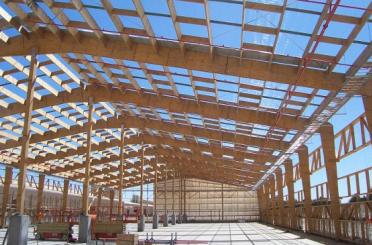According to Michael Green ...
"It is time for our profession to move away from the current trend of celebrating 'eco-bling' - tarting up buildings with overtly technological solutions to shout 'green' in the developed world. It is time that architects tackled the big fundamental issues that the world faces today - global climate change and the need to house the world.
"Architects have a duty to address the impact of our profession as it relates to the environment in much the same way as medical professionals address an accident scene - triage: the process of prioritising patients based on the severity of their condition. Applied to design and construction, triage would have us tackle the most serious issues first and then work our way through the other, less significant ones. It means considering the total impact on the environment of the materials and the energy consumed during construction and over the life of the buildings we design. The materials we specify make an enormous difference to the carbon footprint of buildings that stand for a very long time. When we research the impact of our industry on the global environment, it is astounding to note that buildings are responsible for significant proportions of global water consumption; energy use; greenhouse gas emissions; and solid waste generation."
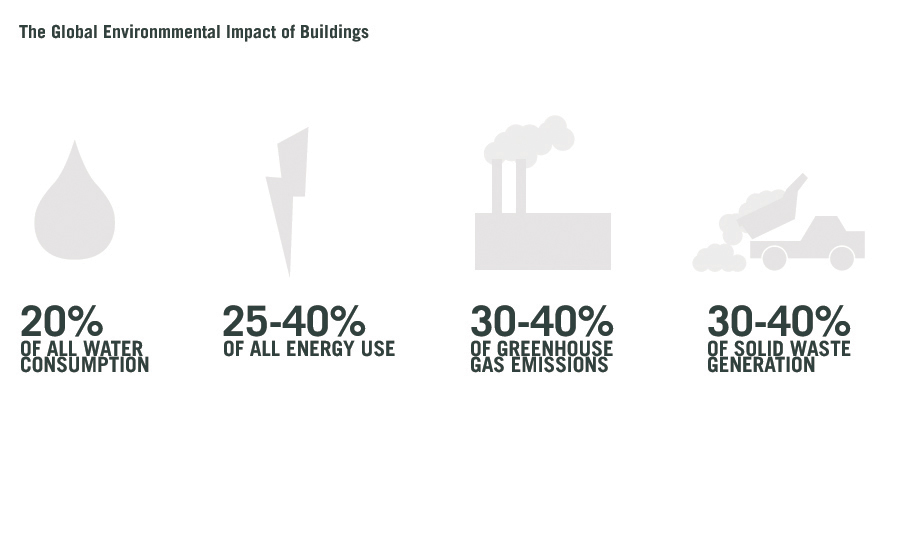
The global environmental impact of buildings - data averaged from various sources by mgb
"Of this impact, the biggest contributor is construction, and the major culprits are concrete and steel. The statistics for these two ubiquitous materials are even more astounding. After water, by volume concrete is the largest material we produce on earth. According to studies at Massachusetts Institute of Technology, 5–10% of global carbon dioxide emissions are attributed to making and using concrete. Steel is one of the most energy-intensive materials we use as architects. Together, the production of iron and steel is responsible for more than 4% of global energy consumption. In other words, the biggest culprits in terms of global climate change are the materials that form the basis of modern construction. This is unsustainable, but there is a solution."
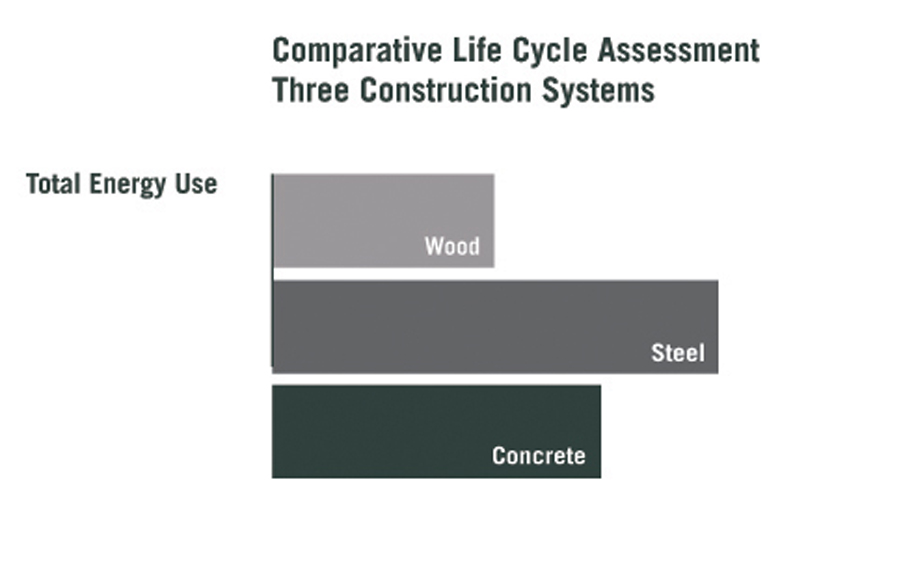
Comparative life cycle assessment of three construction systems - total energy use: data from Canadian Wood Council, obtained by mgb
"When we compare concrete and steel with wood in terms of life cycle emissions and total energy use, wood is by far the better choice. Not only does its production and use generate less greenhouse gas emissions, it actually removes carbon dioxide by storing carbon. One cubic metre of timber stores approximately 1.6 tonnes of carbon dioxide. Wood is the only potentially carbon neutral material readily available now. As architects we have a choice every day – build with a material that is punishing the environment or choose one that reverses the destruction."
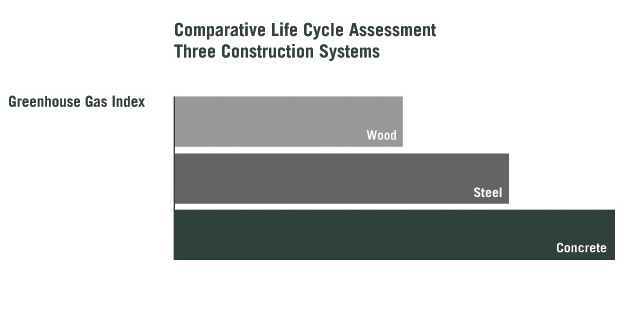
Comparative life cycle assessment of three construction systems - greenhouse gas index: data from Canadian Wood Council, obtained by mgb
"Nowhere is this problem more pressing than in the developing world. About 85% of the world lives in the developing nations, but we in the developed world construct about 85% of the buildings. This is equally unsustainable. According to UN Habitat, some three billion people in the world will need an affordable house over the next 20 years. That’s 100,000 new homes every day, and the single largest market for all building products. At the same time, wood-fuel consumption in the developing world is causing severe deforestation where forests are not managed sustainably.
"If we solve the housing problem in the developing world with concrete we will be responsible for a climate disaster. The task is now at a scale that should trigger innovation. We need to come up with solutions that shift buildings towards affordable and sustainable wood, so that wood becomes the main construction material for the world, and the timber is sourced from sustainably managed forests."
Biography
Michael Green, Principal, McFarlane Green Biggar Architecture (http://www.mgb-architecture.ca), feels a strong connection with wood, even though he was born and raised 'north of the tree line' in a remote community on Canada's Hudson Bay. Based in Vancouver, Michael designs buildings, public art, interiors, landscapes and urban environments around the world. His buildings range from simple houses to international airports, and all incorporate innovative timber elements. Michael believes that the integrity of the architecture profession is to build with modesty, simplicity and maturity. He is committed to achieving professional excellence through living a balanced and generous life, and is happiest when his designs are quiet and modest, and make other people's lives happier.
Case Studies
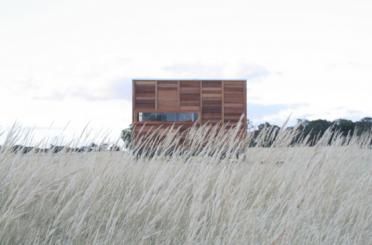
Architect-designed, sustainable and cost-effective timber kit homes
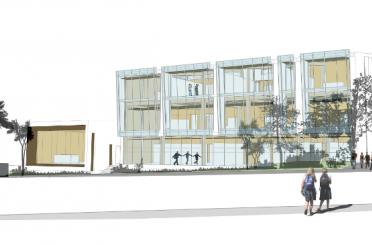
Making waves: New Zealand’s NMIT Arts & Media building is a world first in multi-storey timber seismic design
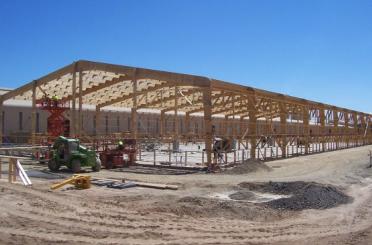
Be surprised by this large timber warehouse structure
Wood products
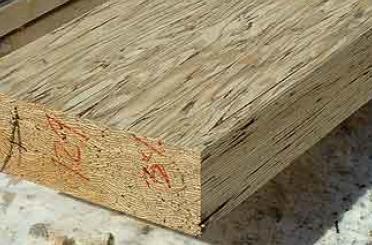
Structural Composite Lumber (SCL)
